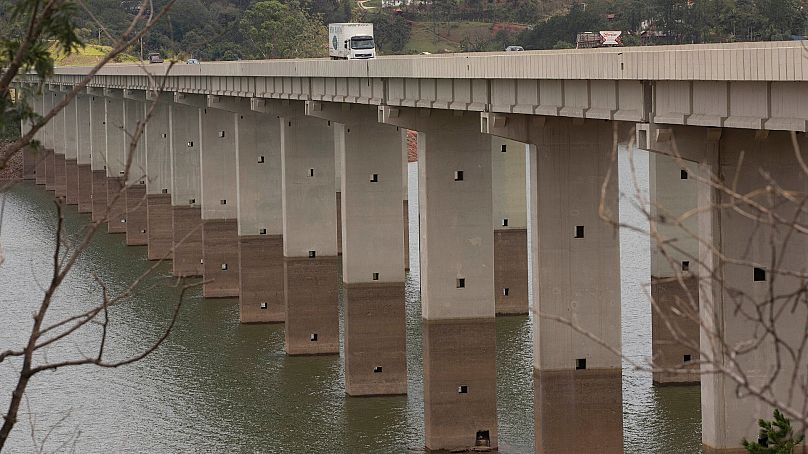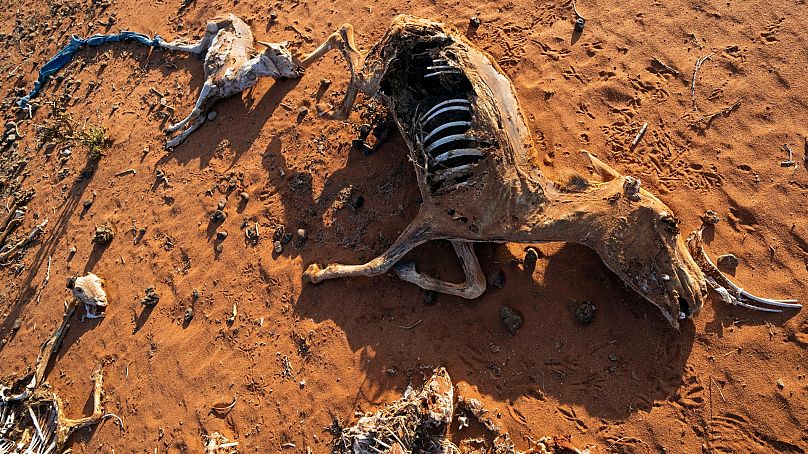‘Sharp’ increase in weather extremes correlates with warming climate, study shows.
The intensity of extreme drought and rainfall has “sharply” increased over the past 20 years, a new study confirms.
These aren’t just tough weather events. They are leading to extremes such as crop failure, infrastructure damage, and even humanitarian crises and conflict.
The study, published in the journal Nature Water, used data from a pair of satellites known as GRACE, or Gravity Recovery and Climate Experiment, to get the big picture on water.
The satellites are used to measure changes in Earth’s water storage - the sum of all the water on and in the land, including groundwater, surface water, ice and snow.
“It’s incredible that we can now monitor the pulse of continental water from outer space,” says Park Williams, a bioclimatologist at the University of California, Los Angeles, who was not involved with the study.
“I have a feeling when future generations look back and try to determine when humanity really began understanding the planet as a whole, this will be one of the studies highlighted," he says.
What does the water data reveal?
The data shows a strong link between climate extremes and rising global average temperatures.
It confirms that both frequency and intensity of rainfall and droughts are increasing due to burning fossil fuels and other human activity that releases greenhouse gases.
“I was surprised to see how well correlated the global intensity was with global mean temperatures,” says Matthew Rodell, study author and deputy director of Earth sciences for hydrosphere, biosphere and geophysics at NASA Goddard Space Flight Center.
A warmer atmosphere increases the rate at which water evaporates during dry periods. It also holds more water vapour, which fuels heavy rainfall events.
This means continued global warming will lead to more drought and rainstorms that are worse by many measures - more frequent, more severe, longer and larger.
Which regions suffered the worst flooding and droughts?
Researchers looked at 1,056 events from 2002-2021 using a novel algorithm that identifies where the land is much wetter or drier than normal.
That showed the most extreme rains keep happening in sub-Saharan Africa, at least through December 2021, the end of the data. The rainfall extremes also took place in central and eastern North America from 2018-2021 and Australia during 2011-2012.
The most intense droughts were a record-breaking one in northeastern South America from 2015-2016; an event in the Cerrado region of Brazil that began in 2019 and continues; and the ongoing drought in the American Southwest.
The latter has caused dangerously low water levels in two of the biggest US reservoirs, Lake Mead and Lake Powell. Those remain low despite heavy rains this year.
Drought events outnumbered heavy rain events by 10 per cent. Their geographic extents and how long they lasted were similar.
Europe, too, has faced drought this winter. This year opened with the second warmest winter on record. It came after 2022 was the second hottest year on record with Italy, Spain, the UK and France setting temperature records.
Now low rain and snowfall mean parts of Europe face concerns about the impact of drought on farming, drinking water supplies and energy generation.
What impact will worsening floods and droughts have?
Infrastructure like airports and sewage treatment plants are becoming more challenged by extreme weather, the study notes. This is because they were only designed to withstand infrequent events.
“Looking forward into the future, in terms of managing water resources and flood control, we should be anticipating that the wetter extremes will be wetter and the dry extremes will get drier,” says Richard Seager, a climate scientist at Columbia University, who was not involved with the study.
Seager says it's a mistake to assume that future wet and dry extremes can be managed the same as in the past because “everything’s going to get amplified on both ends of the dry-wet spectrum.”
According to the US National Integrated Drought Information System, 20 per cent of the annual economic losses from extreme weather events in the US are from floods and droughts.
In the EU alone, climate change-related extremes caused over €145 billion in economic losses in the past decade. France, Italy and Germany are being hit the hardest by this extreme weather.
A drastic swing between extreme drought and unprecedented flooding, dubbed 'weather whiplash', is becoming common in some regions.
Water stress is expected to significantly affect poor, disenfranchised communities as well as ecosystems that have been underfunded and exploited.
For example, the United Nations has said that Somalia is experiencing its longest and most severe drought, an event that has caused the deaths of millions of livestock and widespread hunger.
Venezuela, a country that has faced years of political and economic crises, resorted to nationwide power cuts during April 2016 as a result of the drought conditions affecting water levels of the Guri Dam.
As for solutions, using floodwaters to replenish depleted aquifers and improving the health of agricultural soil so it can absorb water better and store more carbon are just a few methods that could improve water resiliency in a warming world, the study says.













